
Just say NO.
Genre matters. Genre is the foundation for longevity, building a loyal fan base and also the key to unlocking all the other plot bunnies (other genres/story ideas) we’ve been dying to try out. Regardless of the publishing path we choose, genre focus is the game-changer that transitions us from published authors to powerhouse brands.
Hello, My Name is Cait and I am a Plot Bunny Addict
Yeah, we’ll get there in a minute.
By now, all of you should know that when you don’t hear from me (Cait) for a while, you should probably worry because I’m holed up in my study either doing research or coming up with new and creative ways to achieve world domination–though so far, I’ve had to rule out hallucinogenic peanut butter, karaoke, and podcasting.

Frighteningly enough, I looked very much like this as a baby. *shudders*
But, I’m back now, ready to start sharing with all of you the fruits of my research. I’ve been doing some deep digging into the state of the publishing industry, analyzing trends, and preparing to throw down some predictions.
***Punxsutawney Phil ain’t got nothin’ on me.
Today, we’re going to explore current publishing trends and the strategy of choosing a genre. At first glance, it seems pretty straightforward, right? We like to write X, so X will be our genre.
But then…along comes that plot bunny with its cute wiggly nose and cotton ball tail, begging us to take a little side trip into Y genre. It’s cool. We can do that because we can self-publish, right?
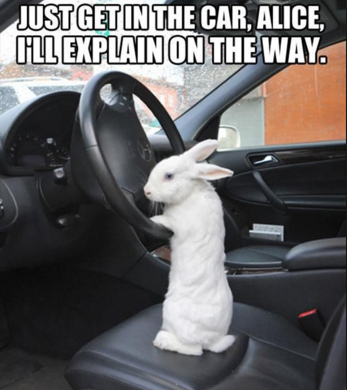
Not So Fast
No more rules. Freedom! We’ve broken the oppressive shackles of traditional publishing in all areas, including the ridiculous way publishers used to limit writers to one specific genre. We are now free to be a seven-genre-crossing author if we want! Ha!
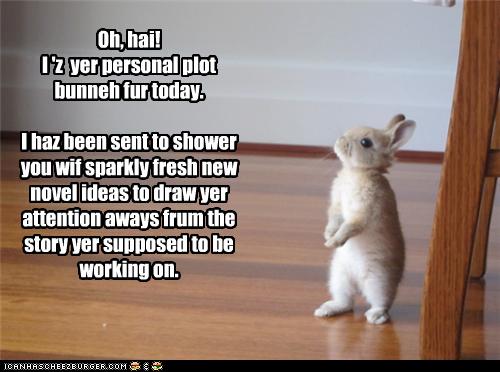
Yeah…it starts like this…
Well…sorta. Not quite. But kinda.
Let’s take a closer look.
In the beginning, BIG PUBLISHING said, ‘Let there be genres,’ and there were genres, and lo, the publisher saw that it was good.
Before Amazon glomped onto the scene with push-button publishing, authors actually had to pick a genre and stick with it….’til death did they part.
There were solid business reasons for this.
Books took a long time to write and even longer to publish, and this isn’t even accounting for the amount of money it took to produce a book and get it to market—pun intended. The agent then publisher invested a lot of time, thought, and care into helping the author choose a genre. This was imperative for crafting a brand—which is when a name alone has the power to drive sales.
Stephen King. Enough said.
The Downside of Genre Loyalty
While brand loyalty was great for book sales, it wasn’t always so easy on the authors. How many thrillers can one writer write before the thrill is gone? For the author and their readers. But, rules were rules and why mess with what worked?
Then indie…
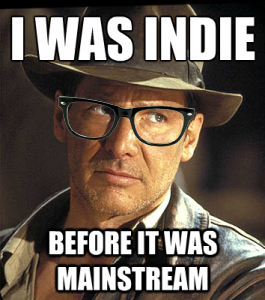
Back in the day, if we started writing historical romance…well, we pretty much kept writing more historical romance. Sure, there was some flexibility in the century we chose for our next book. But, it was a nigh-on-impossible quest to go from regency romance to noir crime thriller. Only a handful of already mega-successful authors really ever managed it well.
***Namely because rules don’t apply to them the same way as mere mortal authors.
The Big (Book) Bang
Enter the era of insta-hey-look-I-published-a-book. All the old rules (ostensibly) went out the window. Wanna go from cozy mystery to epic sword and sorcery? No problem! Just keep hitting that ‘Publish Your Book’ button. Who needed fans of the cozy mystery genre to discover our books in the urban fantasy genre?
Genre schmenre. Social media wizardry would magically lead fans to discover US.

Sure, we might lose some people if we went a while (okay years) without publishing something in our audiences’ preferred genre. Maybe we’d see some drop off when we took that hard left from chick lit to shifter menage erotica. Perhaps our Amazon rankings even dropped below where we’re comfortable.
No biggie. It’s a phase. It will pass.
As long as we just keep hitting that ‘Publish Your Book’ button, we can publish whatever we want in any genre we want. Vive la revolution!
Yes…and, no.
Babies & Bathwater
Interestingly, what I’ve learned from years of working in publishing and studying how it works is that we might have let excitement cloud our vision. To be blunt, in our desire to be unchained from one genre forever…we went a tad cray-cray (actual business term), and threw the book baby out with the bathwater.
Now that the dust is settling in the publishing world, evidence suggest genre focus matters more than we might have realized.
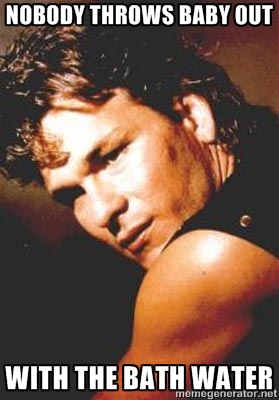
The truth is that we authors need to position ourselves flexibly but firmly between these two extremes. There is a point between Write six hundred spy thrillers until you DIE and Write ALL the genres and even MIX them!
Regardless of what new shiny the muse wants to explore, picking then sticking with a primary genre is the foundation for great brands, books, and business.
Self-Publishing
Counter to what many have touted, it turns out self-publishing is especially sensitive to genre consistency.
Over the past two years, there were a number of minor fads and trends that had authors jumping from epic fantasy to fairytale retellings, to urban fantasy all within the space of six months. On the one hand, authors developed some momentum in KENP pages read and attracted new fans.
However, in every competitive analysis I’ve done on authors who self-publish, those who started with a primary genre and stuck with it for 90% of their books over a 3-4 year period had the best book rankings, author rankings, social media followings, and Google name recognition.
And while I’m not privy to every single author’s sales numbers. Stupid restraining orders *rolls eyes*. I have been able to dig up enough data that permits me to make the following extrapolation:
Authors with a primary genre for 90% of their books over a 3-4 year period made the most money and had the consistently bestselling books.
This isn’t to say these authors don’t also publish in other genres, but they don’t spend the majority of their writing time, social media time, and marketing resources trying to establish their name and brand in multiple genres simultaneously. That is not a formula for success, more a formula for a nervous breakdown.
For these authors, evidence demonstrates that a successful presence in secondary genres develops more organically and over a longer period of time.
What’s the Takeaway?
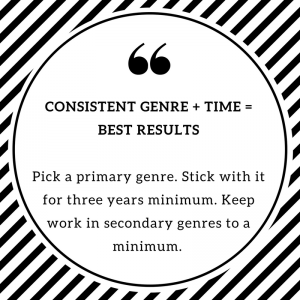
If our career goal is to be a hybrid author or even a purely legacy publishing track, then building in a primary genre becomes even more critical.
The Legacy Published Plan
Let’s start with traditional (legacy) publishing. Getting a book out with the Big 5 generally takes anywhere from 18-24 months. Most traditionally-published authors publish one book per year.
There’s a lot of time, a LOT of money, and a lot of resources invested in getting each book to market (as mentioned earlier). Thus, it makes sense for publishers to erect strong parameters around the the author’s brand. Focus is what generates traction, backlist, and a solid fan base with money to spend.
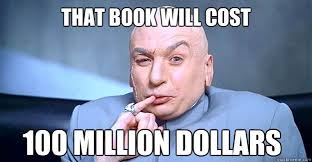
Nowadays, there is a teeny tiny degree of flexibility that has crept into the legacy model, most likely in order to compete with Amazon’s yoga-esque genre fluidity. That’s how we get writers like Emma Donoghue who can bend from Victorian mystery to the contemporary masterpiece of psychological drama that is ‘Room.’
Yet, she is the exception, not the norm. In truth, only a fraction of a percentage of traditionally-published authors have been able to pull off this genre-inverted-triangle successfully.
All to say that, if we want to publish traditionally, we’d better really, REALLY love the genre we’re writing in, because that’s going to be home for a long, long time.
The Hybrid Author Plan
With a hybrid publishing model (some books self-published, some books through a traditional publisher), our approach will depend on whether we start out self-published or traditionally-published.
If we start out as self-published but with a goal to eventually enter into the traditional model, genre consistency becomes essential (even if our long-game is to change genres once we break into traditional publishing).

There are major advantages for a writer who can demonstrate a solid track record of longevity and focus in a single genre. First, genre concentration tangibly demonstrates our ability to achieve long-term goals.
Secondly, by maintaining genre cohesion, this increases the odds we’ll build a vested fan base eager to BUY OUR future books. This makes our books a sound investment for agents/editors based off numbers (not hopes and luck).
Thirdly, genre focus is vital for building a strong author brand. Name recognition alone is useless and not a brand. Only a name that translates into an actual sale is a brand.
James Patterson—>Ka-Ching!
Weird Guy Who Book Spams Non-Stop—>Unfollow & BLOCK
Since legacy press is a business and not a non-profit, these three benefits can translate into (our) massive advantage when we’re seeking our own place in ‘the club.’
We need the club, but why does the club need us? That’s where we need to hustle.
If we’ve successfully stuck to a genre and created a strong fan base on our own, then traditional is the next logical business step to expand distribution for a product that is already successfully selling.
It is a win-win for author and publisher.
If we seek to change genres, it shows the publisher we can commit to the time and work it takes to build both the reputation and backlist required for success.
Again, win-win.
Expanding Genre ‘Horizons’
If we start out as traditionally-published and want to expand into self-publishing, there are several things to consider. First, we need to be very, very sure (as in, I-have-had-a-conversation-with-my-lawyer-agent-editor-sure) that we won’t be violating the terms of our publishing contract by putting out work in the same genre.

Once we have the ‘all-clear’ to keep writing in the same genre, there’s a big adjustment ahead we need to take seriously. First there is the frequency of publication required to compete effectively in self-publishing. Can we write at a pulp fiction speed and maintain quality?
***Often this is the impetus for legacy authors to also write indie. They long to produce at a far faster pace than the legacy model can accommodate.
Also, there’s the question of financial resources required to achieve parity between traditional and self-published books. Cover design, proofing, editing, formatting, etc. Fans have come to expect a certain quality and we better be able to meet or even exceed anything we published via legacy.
No easy task.
On the upside, our fan base should already be somewhat established, so YAY! We can just keep growing and growing…
Stretching Our Genre Wings
In another scenario, we may choose to expand into self-publishing because we’d like to try other genres, especially ones that might not necessarily jive with an already-established fan base.
Steampunk fantasy author Gail Carriger is an excellent example of this (as well as being one of my favorite writers). She has a firmly established seventeen-book steampunk genre backlist of traditionally-published books.
Gail chose to self-publish because she wanted to release shorter and more frequent works in her same steampunk universe (with special dispensation from her publisher).
Eventually, she started publishing works in the contemporary urban fantasy genre with an LGBTQ focus.
- Gail Carriger Traditionally-Published Steampunk
- The Brilliant Gail Carriger (Cait’s Hero)
- G.L. Carriger Self-Published Urban Fantasy/LGBTQ
Carriger continues to publish both her traditional steampunk and is now consistently building her presence in this new genre. Because she approached her writing career with strategy, her brand has not only maintained integrity, but it is also steadily expanding.
The Plot Bunny Nursery
Also known as the TBW (to-be-written) pile.
At the end of the day, what does all of this mean for all of us writers along the publication continuum?
This is the question I asked myself one day in January as I looked at my writing and marketing plans for 2018. It’s a fact that I don’t so much have a plot bunny nursery as I do a crack house for wayward hares.
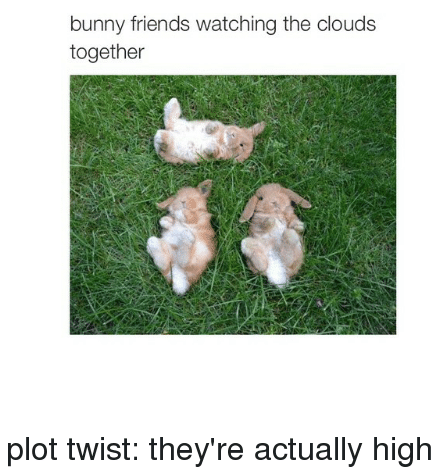
I’m seriously all over the place in terms of my ideas. I have plot bunnies in steampunk, YA mythology, fairytales, historical romance, contemporary psychological thriller, shifter romance. While all my story ideas might be wonderful, I know it’s unwise to try to pursue them all simultaneously.
Strategy matters. This means, I know which bunnies get adopted first. The others can wait (and likely breed).
I confess. My brain bounces from genre to genre like a kangaroo in a bouncy castle. Yours might, too. That’s okay. We can write all the books!
Eventually.
If we publish with planning and intention regarding genre, we’re more likely to reap far better reward. The evidence doesn’t lie. Authors who’ve performed the best—whether traditional, hybrid, or self-published—are the ones who’ve done three things:
Written really great books.
Picked a genre and remained focused on it for at least three years.
Published consistently.
This is where the professional discipline that Kristen talks about really has to kick in. Sometimes, little bunnies have to just chill (drug them if you must). We can’t always do what’s fun and shiny and new. To make it in this highly competitive market, we have make a plan, then stick with the plan, even when it gets boring, or hard, or seems to be getting us nowhere.

Jumping genres non-stop isn’t the cure for sagging sales and rankings. Writing and publishing great books in a focused genre, then building from there is. So keep calm, stay focused, and the bunnies will be just fine.
Promise 😀 . Kristen has a professional plot-bunny-sitter….
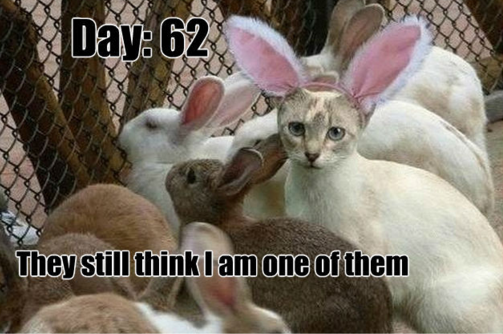
NEW CLASSES (AND SOME OLD FAVES)!
GASKETS & GAITERS: HOW TO CREATE A COMPELLING STEAMPUNK WORLD
Instructor: Cait Reynolds
Price: $65 USD Standard
Where: W.A.N.A. Digital Classroom
When: FRIDAY February 23, 2018. 7:00 PM E.S.T. to 9:00 P.M. EST
Who doesn’t love some steampunk cosplay? Corsets, goggles, awesome hats…
Steampunk has become one of the hottest genres today, crossing the lines of YA, NA, and adult fiction. It seems like it’s fun to write because it’s fun to read.
However, there’s a world of difference between the amateur steampunk writer and the professional steampunk author, and the difference lies in the world they create.
Is your steampunk world historically-accurate enough not to jar the reader out of the narrative with anachronisms?
Does your world include paranormal as well as steampunk?
Are the gadgets and level of sophistication in keeping with the technologies available at the time?
Steampunk is not an excuse to take short-cuts with history. Good writing in this genre requires a solid grasp of Victorian culture and history, including the history of science, medicine, and industry.
This shouldn’t scare you off from writing steampunk, but it should encourage you to take this class and learn how to create a world that is accurate, consistent and immersive.
This class will cover a broad range of topics including:
- Polite Society: Just how prim and Victorian do you want to get?
- Science, Technology, Medicine, and Industry: How to research these without dying of boredom?
- Creating the Blend: How to drop in historical details without info-dumping, and how to describe and explain your steampunk innovations without confusing.
GET READY TO ROAR: THE BUSINESS OF THE WRITING BUSINESS
Instructor: Kristen Lamb
Price: $55.00 USD
Where: W.A.N.A. Digital Classroom
When: Thursday, March 1st, 2018, 7:00-9:00 p.m. EST
Being a professional author entails much more than simply writing books. Many emerging authors believe all we need is a completed novel and an agent/readers will come.
There’s a lot more that goes into the writing business…but not nearly as much as some might want us to believe. There’s a fine balance between being educated about business and killing ourselves with so much we do everything but WRITE MORE BOOKS.
This class is to prepare you for the reality of Digital Age Publishing and help you build a foundation that can withstand major upheavals. Beyond the ‘final draft’ what then? What should we be doing while writing the novel?
We are in the Wilderness of Publishing and predators abound. Knowledge is power. We don’t get what we work for, we get what we negotiate. This is to prepare you for success, to help you understand a gamble from a grift a deal from a dud. We will discuss:
- The Product
- Agents/Editors
- Types of Publishing
- Platform and Brand
- Marketing and Promotion
- Making Money
- Where Writers REALLY Need to Focus
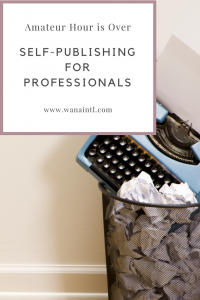
AMATEUR HOUR IS OVER: SELF-PUBLISHING FOR PROFESSIONALS
Instructor: Cait Reynolds
Price: $99.00 USD
Where: W.A.N.A. Digital Classroom
When: Friday, March 2nd, 2018, 7:00-10:00 p.m. EST
Let’s get down to brass tacks. Are you going to go KDP Select or wide distribution with Smashwords as a distributor? Are you going to use the KDP/CreateSpace ISBN’s or purchase your own package? What BISAC codes have you chosen? What keywords are you going to use to get into your target categories? Who’s your competition, and how are you positioned against them?
Okay, hold on. Breathe. Slow down. I didn’t mean to induce a panic attack. I’m actually here to help.
Beyond just uploading a book to Amazon, there are a lot of tricks of the trade that can help us build our brand, keep our books on the algorithmic radar, and find the readers who will go the distance with us. If getting our books up on Amazon and CreateSpace is ‘Self-Publishing 101,’ then this class is the ‘Self-Publishing senior seminar’ that will help you turn your books into a business and your writing into a long-term career.
Topics include:
- Competitive research (because publishing is about as friendly as the Red Wedding in Game of Thrones)
- Distribution decisions (because there’s actually a choice!)
- Copyright, ISBN’s, intellectual property, and what it actually all means for writers
- Algorithm magic: keywords, BISAC codes, and meta descriptions made easy
- Finding the reader (beyond trusting Amazon to deliver them)
- Demystifying the USA Today and NYT bestselling author titles
- How to run yourself like a business even when you hate business and can’t math (I can’t math either, so it’s cool)
Yes, this is going to be a 3-hour class because there is SO much to cover…but, like L’Oréal says, you’re worth it! Also, a recording of this class is also included with purchase.
The class includes a workbook that will guide you through everything we talk about from how to do competitive research to tracking ISBNs and distribution, and much, much more!
Time is MONEY, and your time is valuable so this will help you make every moment count…so you can go back to writing GREAT BOOKS.
EVEN MORE CLASSES…
Check them out at W.A.N.A. Int’l.
- Thursday, March 8, 2018. 7-9 p.m. EST. $45.00 USD.
- Friday, March 9, 2018. 7-9 p.m. EST. $65.00 USD.
- Thursday, March 15, 2018. 7-9 p.m. EST. $50.00 USD.
- Friday, March 16, 2018. 7-9 p.m. EST. $50.00 USD



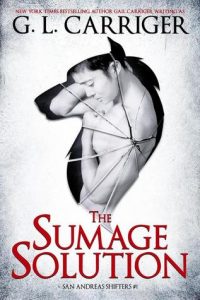


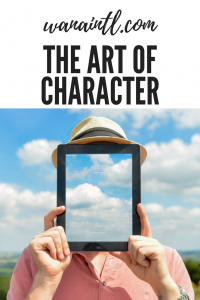

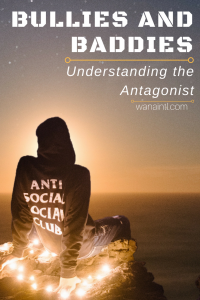








15 comments
5 pings
Skip to comment form
but….but…..I read all sorts of genre, why can’t I WRITE all sorts of genre???? Just because I don’t turn out a book a month, doesn’t mean I can’t play with my writing does it?
Huh, it does. Sigh. Time for the BIG GIRL panties
One of the few issues I don’t have.
Yet!
I love my genre, and I keep having ideas for new series, but always in the same fantasy world and in the romance genre. I just make them wait in line to tell their story as I make myself write a full first draft before tackling a new story (I will work on something new while editing, though).
A writing friend has a whole herd of bunnies. When she sends me her stuff to beta read, I never know if it’s going to be YA, epic fantasy, a murder mystery, or sci-fi. I regularly wondered how she managed such eclectic writing. Sounds like that’s more normal than I thought!
Okay… I’m so sorry, but I was reading just for the bunnies…I’ll go back and really concentrate on the not-bunny stuff.
In the end, writing what you love and writing for ‘kicks’ or to experiment is no comparison. When I want to joggle my brain with something new, I do a short story, throw it at a contest, then read the stories that won (oh no, not mine) and reality usually punches me in the nose. Yes, we might come up with a great limerick, in the shower or while making chili, but that doesn’t mean it’s really our writing/creative forte…
Love all the paths you took here, great thoughtful info — but still, the bunnies were the best. :o)
…and glad to see you!!
I realized around 2-3 weeks ago that I needed to pick a genre and stay with it. All the jumping around and half-baked stories had to stop. I was getting nowhere the way I was doing things. So here I am, working on a new series in one genre with and the idea for another series IN THE SAME GENRE percolating in the back of my head. And I feel really good about it.
Thank you for confirming I’m on the right path.
Having just ‘shipped’ a fantasy novel (as Kristen would say), I was all prepared to knuckle down and rewrite a mystery stage-play – BUT! then there was this fluffy new bunny covered in sparkle dust and with magic ears and I totally got sidetracked.
Only now, thanks to you, I think this might be the right track, since it’s another fantasy in a similar tonal range to the last. (The sparkly magic bunny thanks you too, fairy godmother Cait.)
As for the mystery… it’ll still be there in my non-creative hours, waiting to be typed up, chopped up and done up.
I know my strength, but I’ve been following the bunnies. Why? They glitter? After a depressing day when I looked at my lifetime sales (sigh), I realized I have to get back to what I do best and what my audience likes.
That said, I’ll still publish books-of-my-heart and not expect them to sell as well.
I have a somewhat different problem. Well, two problems: I have several books in progress: a steampunk series (with magic), a sci-fi, and a series that is my major focus – and my major problem.
The problem is that I don’t know what genre it is!
Is it sci-fi because it’s contemporary with alien abductions and it’s set on another world? Is it paranormal because there are psychics and oracles and the ancient Greek Gods are involved? Is it a thriller because there are not one but TWO psychopaths?
How do I categorize this? I need help!
Oops! It got away!
Can’t remember where I read it, but there was something about the tropes of a particular genre, and reader expectations of the genre. Where on earth or elsewhere do I find that?
This is all well and good if you have several decades of writing ahead of you. But if you’re rather far along in years, and you want to write all the things, you literally don’t have time to build and wait. 😉
Plus I get bored easily. So I guess I’m destined to write whatever I like and not make any money. So far, that’s what’s happening. 😉
Theo write ALL THE THINGS! Have fun! Your goal is different. You are finding fresh life by being creative and that is wonderful. This track advice is for those pursuing a professional career. Sure we might light on the one book that goes BOOM and becomes insanely popular (alignment of stars, Mercury in retrograde) but that’s a hard road for a long-term career. It is far more likely to generate anxiety, neurosis, burnout, and despondency than a rewarding career.
But you? Go enjoy all the bunnies we have to wait on 🙂 . We shall be secretly, okay openly, jealous of you.
This is why God invented pen names. I write fantasy (though not enough of it), will write SF Because Reasons, but I plan to make the covers of both really obvious which is which. But when I write Westerns, I will be Someone Else.
Fortunately one of my natural lengths appears to be the six book series…
Controversially I think that it is better to write something that you’d choose to read yourself first and foremost before you make a decision on whether it will be popular. Whilst it is good to look at current trends when your idea is in its infancy writing should be a joy not chore as Bernard Cornwell says.
Nothing in this post suggested writing to a trend. The point is focus. If you love thrillers, odds are you’ll write thrillers. But if book one doesn’t take off into the stratosphere, keep writing more thrillers (what you like to read). Switching genres because X seems to be selling better than thrillers is exactly what Cait is warning against in this post. Don’t jump from thrillers to urban fantasy because it is ‘hot.’ Thus, you aren’t being controversial at all only reiterating the point we are making here 🙂 .
This is super helpful info, Cait. Love your humor, too! Thank you!
Thanks again, Kirsten!
[…] are many ways to build audience and market your book. Cait Reynolds suggests sticking to your genre to build audience and trust, Rick Lite tells us how to evaluate book marketing services, Rafia Zakaria counter-intuitively […]
[…] Cait mentioned in her post on best practices for publishing success, genre focus is a major factor in becoming a successful author. When we focus on a specific genre […]
[…] Genre Loyalty vs. Plot Bunny Saboteurs […]
[…] Publishing Success: Genre Loyalty vs. Plot Bunny Saboteurs […]
[…] to, honest I was (I even started!), but then I was distracted by this shiny new idea, and there was this post from Cait Reynolds and… mmm. New […]